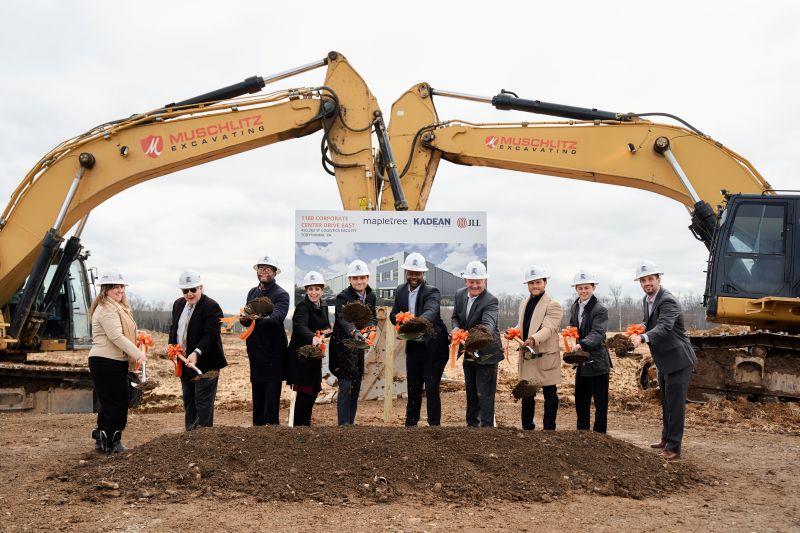How IFC is mobilizing capital for sustainable urban growth – World Bank Blogs

Report on Urban Infrastructure Investment and its Contribution to Sustainable Development Goals
Urbanization as a Catalyst for SDG Achievement
Urbanization presents significant opportunities for advancing key Sustainable Development Goals (SDGs), particularly SDG 8 (Decent Work and Economic Growth). The realization of this potential is contingent upon strategic investment in urban infrastructure. In emerging economies, every $1 million invested in public infrastructure generates between 10 and 17 jobs, a critical factor in achieving SDG 8 targets. The International Finance Corporation (IFC), the private sector arm of the World Bank Group, plays a pivotal role in this process by helping cities mobilize private capital and strengthen public spending to finance, build, and operate infrastructure essential for sustainable growth and job creation, directly contributing to SDG 11 (Sustainable Cities and Communities).
A Collaborative Approach to Sustainable Urban Development
Achieving sustainable urbanization requires a multi-stakeholder approach, aligning with SDG 17 (Partnerships for the Goals). The World Bank Group, comprising the IFC, IBRD, IDA, MIGA, and ICSID, exemplifies this collaborative model by integrating public and private sector expertise with innovative financing and risk mitigation tools to build inclusive and resilient cities.
Pillars of the Joint Strategy for Urban SDGs
The joint approach focuses on three key pillars that directly support the 2030 Agenda for Sustainable Development:
- Supporting Resilient Infrastructure: Developing cutting-edge infrastructure that is resilient to climate change and other shocks, directly contributing to SDG 9 (Industry, Innovation and Infrastructure) and SDG 11.
- Creating Enabling Business Environments: Fostering conditions that promote private sector growth and job creation, which is fundamental to achieving SDG 8.
- Mobilizing Private Capital: Leveraging private investment for urban projects, a core tenet of SDG 17, to supplement public funds and scale up development efforts.
The International Finance Corporation’s Strategic Impact on Urban SDGs
Financing for Sustainable Cities
For over two decades, the IFC has been a key partner for cities, providing commercial financing to strengthen urban infrastructure and improve service delivery. In the last fiscal year, IFC’s subnational investments reached a record $1.7 billion. Total investments over two decades amount to $5.6 billion across more than 20 countries, funding essential infrastructure projects that advance multiple SDGs. Furthermore, the mobilization of capital from other investors has grown significantly, demonstrating a successful partnership model in line with SDG 17.
Core Objectives and SDG Alignment
The IFC’s cities strategy is centered on two objectives that are intrinsically linked to the Sustainable Development Goals:
- Catalyzing Private Financing: To diversify funding sources for cities, thereby strengthening partnerships for sustainable development as outlined in SDG 17.
- Strengthening Public Expenditure: To build resilient infrastructure that stimulates economic growth and creates jobs, directly supporting SDG 8, SDG 9, and SDG 11.
Sector-Specific Contributions to Global Goals
IFC’s investments are targeted at labor-intensive sectors that yield broad sustainable development benefits:
- Water and Sanitation: Investments in this sector directly advance SDG 6 (Clean Water and Sanitation).
- Transport and Energy: Projects improve access to affordable and clean energy (SDG 7) and build resilient infrastructure (SDG 9).
- Job Creation and Economic Access: By supporting construction, engineering, and maintenance, these investments create ongoing employment (SDG 8). Improved digital and transport infrastructure expands access to jobs and training, particularly for underserved populations, contributing to SDG 10 (Reduced Inequalities).
Analysis of SDGs, Targets, and Indicators
1. Which SDGs are addressed or connected to the issues highlighted in the article?
-
SDG 8: Decent Work and Economic Growth
- The article directly connects urbanization and infrastructure investment to “job creation and economic growth.” It emphasizes that IFC’s investments support “ongoing employment in construction, engineering, and maintenance” and stimulate related industries, directly aligning with the goal of promoting sustained, inclusive, and sustainable economic growth and productive employment.
-
SDG 9: Industry, Innovation and Infrastructure
- This is a central theme. The article focuses on the need to “invest in the infrastructure needed to support their growing populations.” It details the World Bank Group’s and IFC’s efforts in financing and building “cutting-edge, resilient infrastructure,” including “water, transport, and other essential infrastructure,” which is the core of SDG 9.
-
SDG 11: Sustainable Cities and Communities
- The article is framed around “World Cities Day” and discusses how to “realize the full potential of urbanization.” The objective is to build “cities that work for everyone” and create “livable, job-rich urban areas.” This directly addresses the goal of making cities and human settlements inclusive, safe, resilient, and sustainable by improving urban infrastructure and service delivery.
-
SDG 17: Partnerships for the Goals
- The article highlights the “One-World Bank Group Approach,” which involves multiple institutions (IFC, IBRD, IDA, MIGA) working together. It also stresses the importance of mobilizing “private capital at scale” and strengthening public-private collaboration to finance urban development, which reflects the essence of strengthening the means of implementation and revitalizing global partnerships for sustainable development.
2. What specific targets under those SDGs can be identified based on the article’s content?
-
Target 8.3: Promote development-oriented policies that support productive activities, decent job creation, entrepreneurship, creativity and innovation.
- The article’s focus on how infrastructure investment “drives job creation and growth” and supports employment in sectors like “construction, engineering, and maintenance” directly relates to this target. The strategy of investing in labor-intensive sectors is a clear policy orientation towards job creation.
-
Target 9.1: Develop quality, reliable, sustainable and resilient infrastructure, including regional and transborder infrastructure, to support economic development and human well-being.
- The article explicitly mentions supporting “cutting-edge, resilient infrastructure” and IFC’s investments in “water, transport, and other essential infrastructure.” This aligns perfectly with the goal of developing resilient and sustainable infrastructure to foster economic growth and well-being.
-
Target 11.a: Support positive economic, social and environmental links between urban, peri-urban and rural areas by strengthening national and regional development planning.
- The article discusses a comprehensive approach to “build cities that work for everyone” and create “livable, job-rich urban areas.” This implies a planned approach to urban development that strengthens economic and social links by improving infrastructure like transport, which expands access to jobs and opportunities for all populations.
-
Target 17.3: Mobilize additional financial resources for developing countries from multiple sources.
- The article details IFC’s strategy to “catalyze private financing to diversify funding sources for cities” and “mobilize private capital at scale.” It notes that “Mobilization from other investors has also increased,” which is a direct example of achieving this target.
3. Are there any indicators mentioned or implied in the article that can be used to measure progress towards the identified targets?
-
Financial Investment Volume
- The article provides concrete financial figures that serve as indicators of investment in infrastructure. Examples include: “IFC’s subnational sector investments reached a record $1.7 billion,” and “IFC has invested $5.6 billion over more than two decades.” These figures measure the financial resources mobilized for urban infrastructure projects.
-
Job Creation Ratio per Investment
- A specific metric is provided: “every $1 million invested in public infrastructure generates 10–17 jobs” in emerging economies. This can be used as a direct indicator to measure the effectiveness of infrastructure investment in creating employment, linking to SDG 8.
-
Leverage Ratio of Private Capital
- The article implies an indicator for partnership effectiveness by stating that mobilization from other investors grew “to more than four times IFC’s own account in FY24–25.” This ratio of mobilized private capital to direct investment by development finance institutions is a key measure of progress for SDG 17.
-
Geographic Scope of Interventions
- The article mentions that IFC has helped cities in “more than 20 countries.” The number of countries and cities receiving support for infrastructure development is an implied indicator of the scale and reach of these urban development programs, relevant to SDG 11.
4. Summary Table of SDGs, Targets, and Indicators
| SDGs | Targets | Indicators |
|---|---|---|
| SDG 8: Decent Work and Economic Growth | Target 8.3: Promote development-oriented policies that support productive activities and decent job creation. | Number of jobs generated per $1 million invested in public infrastructure (stated as 10-17 jobs in emerging economies). |
| SDG 9: Industry, Innovation and Infrastructure | Target 9.1: Develop quality, reliable, sustainable and resilient infrastructure to support economic development. | Total financial investment in urban infrastructure (e.g., IFC’s $1.7 billion in one year and $5.6 billion over two decades). |
| SDG 11: Sustainable Cities and Communities | Target 11.a: Support positive economic and social links by strengthening development planning. | The number of countries with cities receiving support for infrastructure improvement (mentioned as “more than 20 countries”). |
| SDG 17: Partnerships for the Goals | Target 17.3: Mobilize additional financial resources for developing countries from multiple sources. | Ratio of mobilized capital from other investors to direct institutional investment (stated as growing to “more than four times IFC’s own account”). |
Source: blogs.worldbank.org
What is Your Reaction?
 Like
0
Like
0
 Dislike
0
Dislike
0
 Love
0
Love
0
 Funny
0
Funny
0
 Angry
0
Angry
0
 Sad
0
Sad
0
 Wow
0
Wow
0



















































.jpg.webp?itok=0ZsAnae9#)
























